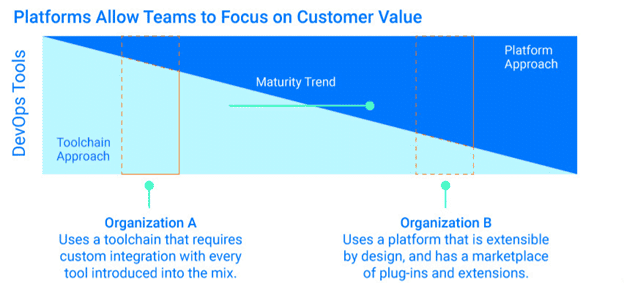Cloud orchestration set out to transform IT operations
At its inception, cloud computing – with all its infrastructure, platforms, and applications – delivered capabilities and services IT organizations only dreamt possible less than a decade ago.
Table of Contents
ToggleToday enterprise organizations have come to rely on the cloud to streamline operations, reduce capital spending, and enable flexibility for critical functions such as data storage and processing. As it is with the implementation of any groundbreaking technology, reliance upon cloud-based resources is not without formidable challenges.
Having said that, a brief examination of cloud orchestration that exposes both its good intentions and the mishaps post-implementation is in order.
So far, so good…
It is safe to assume that the advent of novel cloud orchestration has served industry well with its definitive topography across the landscape of automated infrastructure.
The beauty of cloud orchestration – automated arrangement and coordination of tasks enabling the consolidation of the workflows of many into one – attracted the most progressive IT operations to implement the technology.
While the widespread acceptance and assimilation of the technology is laudable, it did not arrive without some troublesome baggage.
As the greatest thing to happen to automation, why should there be issues?
We know cloud Infrastructure is here to stay, but since its inception, many IT operations have implemented in an ad hoc, opportunistic fashion that yield isolated islands of automation and their accompanying castaways, most notably low operational agility and high costs.
At its best, the cloud is the answer to everything – at its worst, the cloud is a formidable enemy. Recall when the failure of Amazon’s cloud-hosted web services temporarily took out Quora, Reddit, and Foursquare.
In order to optimize its capabilities, we need to understand the breakdown in the system and mitigate the birth pains.
So what happened?
While some developers regarded the outage as an ominous sign to those who may rely too much on the cloud, in hindsight, we know that failure resulted from a key design principle of the cloud – preparedness for failure.
Effective management of cloud-based resources is a growing challenge for enterprise IT as organizations migrate existing applications to the cloud and develop new capabilities that depend on cloud-based infrastructure.
Let’s examine a few of the pain points expressed by different tech teams using different apps and services to automate their infrastructure.

Lack of connectivity among DevOps tools in the toolchain.
There are many DevOps tools available that help automate different tasks such as CI, infrastructure provisioning, and testing, but they often do not marry well.
Many organizations attempt to overcome this obstacle with custom scripts. While this approach serves as a temporary solution, these scripts are tailor-made to suit each application and cannot be used again for automation workflows.
Manual testing
Test automation is still a struggle. Periodic manual testing is a barrier for continuous delivery as the discovery of most bugs occurs later in the software delivery workflow – a costly inconvenience.
Mobility
Data centers are no longer static. With the global supply chain as a major player, edge clouds are operating aboard planes, ships, and trucks. This requires an accommodation of communication among edge clouds on the move and an on the ground central data center, like a mobile user moving between cell towers.
Toolchain Sprawl
The typical IT portfolio comprised of a heterogeneous mixture of legacy and modern applications, simultaneously spans decades of technology, cloud platform vendors, along with private and public clouds in labs and data centers.
A workflow that spans across these aspects leads to toolchain sprawl as each team uses the toolchain best serving their needs.
Siloed Teams
Applications evolve across functionals silos of Developers, QA, and Operations. Although these teams collaborate, they often have conflicting interests.
A popular method involves employing developers to build, test, and operate the software. Though this might work in theory, developers are bogged down by production issues and spend too much time operating what they built last month as opposed to innovation.
Most organizations try to get all teams involved across all phases of the SDLC, but this approach still relies on manual collaboration. As a result, the timely flow of application changes is at unnecessary risk.

Scale
The orchestration of many edge clouds at scale is challenging. How do you manage all the edge clouds? Moreover, how do you monitor and collect KPIs from millions of edge objects?
Cloud orchestration: Self-healing
The local edge orchestrator should support self-healing with zero human intervention scenarios.
What is the missing piece?
Up until recently, there has not been one tool to tie all these fragmented automation/orchestration tools together.
Cloud computing systems deal with huge amounts of data across multiple cloud environments, making it difficult to establish and maintain coherent processes that depend on increasingly disparate systems. As a result, IT organizations have turned to a new type of cloud technology designed to facilitate the integration and management of cloud-based infrastructure: cloud orchestration.
Why cloud orchestration?

Image Source: cloudify.co
Implementing a platform-based cloud orchestration eases the pain of transitioning to a new infrastructure or improving a current but inefficient one by offering the following irresistible benefits:
Agility: Simplify complex processes in order to increase the time to production.
Visibility control: Complete transparency over workloads, tenants, and users.
Total migration: Enjoy successful cloud migration while managing existing tools.
Reduced costs: Easily move workflows between clouds and avoid vendor lock-in.
Cloud orchestration: Endurance is everything
There are many things to consider when it comes to protecting and optimizing any enterprise. In order to remain ahead of the competition, businesses must simplify the complexity of the CI/CD pipeline.
Open source orchestration technology allows applications to run across multiple cloud or data center platforms efficiently.
Cloud orchestration enables businesses to accelerate delivery for new innovations, applications, and hybrid infrastructure by orchestrating processes across domains, systems, and teams. Leveraging a unified portal and cloud-inspired IT service model with full-stack automation and monitoring is necessary to ensure compliant application integration.
At some point, all systems, even the most renowned, will fail. Preserve enterprise integrity with an unstoppable ally you trust.
Design with failure in mind. Choose a maestro to orchestrate. Expect to win.
Summary:
Cloud Orchestration
Today enterprise organizations have come to rely on the cloud to streamline operations, reduce capital spending, and enable flexibility for critical functions such as data storage and processing. As it is with the implementation of any groundbreaking technology, reliance upon cloud-based resources is not without formidable challenges. The beauty of cloud orchestration – automated arrangement and coordination of tasks enabling the consolidation of the workflows of many into one – attracted the most progressive IT operations to implement the technology. There are many DevOps tools available that help automate different tasks such as CI, infrastructure provisioning, and testing, but they often do not marry well. Test automation is still a struggle. Periodic manual testing is a barrier for continuous delivery as the discovery of most bugs occurs later in the software delivery workflow – a costly inconvenience. Applications evolve across functionals silos of Developers, QA, and Operations. Although these teams collaborate, they often have conflicting interests. Up until recently, there has not been one tool to tie all these fragmented automation/orchestration tools together. Implementing a platform-based cloud orchestration eases the pain of transitioning to a new infrastructure or improving a current but inefficient one by offering the following irresistible benefits: Agility: Simplify complex processes in order to increase the time to production. Visibility control: Complete transparency over workloads, tenants, and users. Total migration: Enjoy successful cloud migration while managing existing tools. Reduced costs: Easily move workflows between clouds and avoid vendor lock-in.





